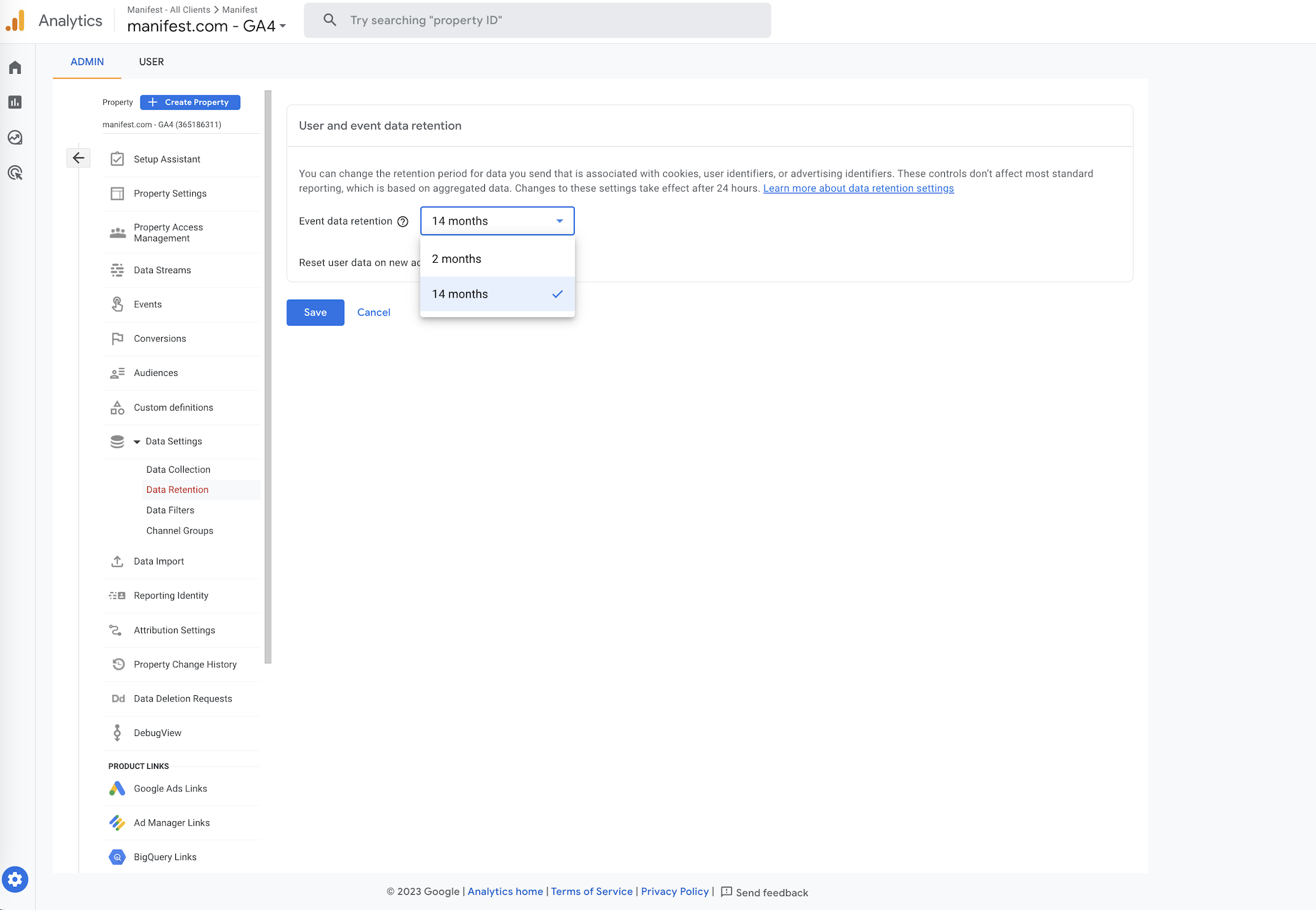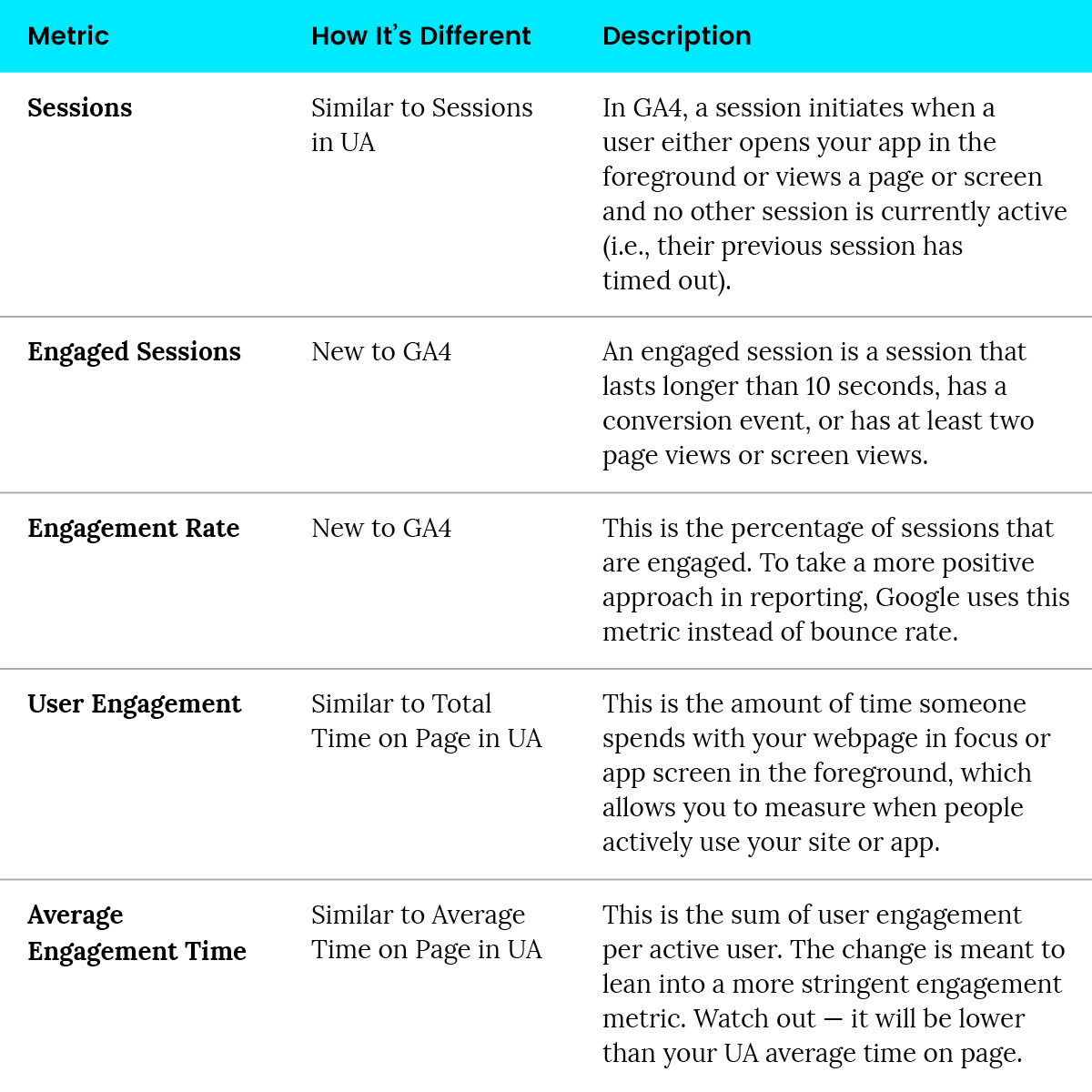
Google has been teasing us with Google Analytics 4 for a while now, but it’s finally making good on its promise on July 1, 2023. I know, it’s a promise we were all hoping Google would break. Don’t get me wrong, there are some cool new features coming out of the tech giant’s latest iteration of analytics (including new options for attribution modeling), but it feels a little like Google is building the boat as we sail it.
Which may lead one to wonder why things are changing at all. Universal Analytics (aka UA or GA3) has been working just fine since 2015, so why mess with it? The short answer: data privacy. GA4 is designed to function without cookies or identifiers, using a more flexible approach to measurement.
If you or your team manages or pulls data or interacts with GA in any way, you’ve probably had a few headaches trying to wrap your head around the updated analytics tool over the past few months. The user interface is somewhat unintuitive; features are removed or added without warning, and there’s not a lot of literature available about any of it.
While there is still reading up to do on GA4, our analytics team here at Manifest wants to help you through the transition. We’ve watched a lot of GA4 tutorials, set up our clients with the new platform and even complained a little to each other in our “Surviving GA4” Slack channel. All of this is to say that we’ve learned a thing or two that you might find useful. Here are five things you need to know about GA4. You’re welcome!
1. There is a difference between GA4 and UA sessions measurements.
Sessions are now events in GA4, meaning they’re calculated a little differently and will not be the same as in UA. There are, however, two similarities: A session ends after 30 minutes of inactivity, and new sessions will start if a user comes back after a session timeout. In a sample of our client accounts, 57% saw GA4 sessions increase (averaging about 7% higher), with the rest (43%) experiencing lower GA4 sessions than in UA (down about 4%, on average).
- Why GA4 sessions might be higher than in UA: There’s a longer window for processing late hits, and engaged sessions can occur without a page view.
- Why UA sessions might be higher than in GA4: New sessions start at midnight, or a user encounters a UTM parameter.
2. There will be a shorter data retention period.
While UA held onto data indefinitely, GA4 will hold data for either two months or 14 months. Be sure you go into your admin settings (Admin > Data Settings > Data Retention) and change your drop-down to 14 months, as the default is two months.

3. Some out-of-the-box metrics will disappear; others will be replaced or added.
The user interface won’t be the only thing that looks different in GA4. There will be some new metrics — and some metrics will die with UA. See a list of the major changes below.

4. Data thresholding is here to protect user privacy.
GA4 has introduced data thresholding to protect users’ privacy. This means that when user count is low, data won’t get as granular (broken out by campaign, ad, etc.) or won’t be visible and might get lumped into a category known as “(not set).”
5. Expect more data estimates, especially when getting granular.
GA4 is now relying more on statistical estimates for totals (e.g., sessions), whereas UA didn’t have this feature. While sampling occurred in UA depending on the size of your data, you may see more discrepancies in totals as you get more granular.
- As an example, for one client, we saw a total of 88,779 paid search sessions for a given time period. However, when we added a campaign parameter, paid search sessions fell slightly, to 88,394.
- Since there’s no way around these nuances, Manifest uses the totals without any filters or caveats in our reporting where there may be a discrepancy. The good news is that directionally, all insights and findings hold true even with slight differences in totals.
6. Bonus tip!
For those with standard Universal Analytics, Google Analytics will stop processing data on July 1, 2023. Luckily for us, Google recently extended the deletion period for this data from the end of 2023 to July 1, 2024. Be sure to export any data you think you’ll need by then.
